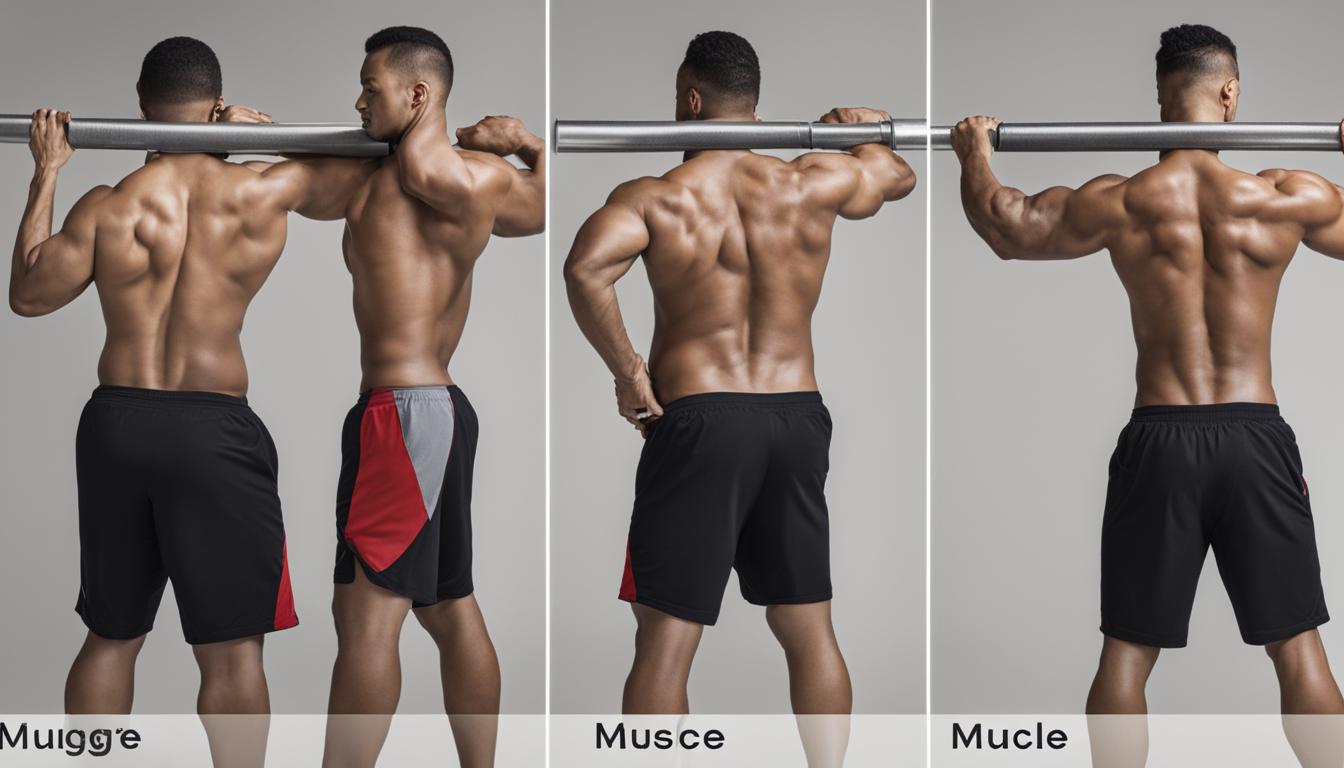Physical fitness is not a one-time achievement; it is a way of life. Embracing physical fitness as a continuous journey is crucial for achieving holistic well-being. The continuous nature of physical fitness implies that staying active and healthy requires consistent effort and commitment towards regular exercise, healthy eating, and overall healthy lifestyle habits.
In this article, we will describe the continuous nature of the physical fitness concept, exploring its significance in maintaining overall health. We will discuss the different components of physical fitness, benefits of regular exercise, strategies for making physical activity a lifelong commitment, and how to maintain physical fitness in the long run.
Key Takeaways:
- Physical fitness is a continuous journey, not a one-time achievement.
- Regular exercise, healthy eating, and overall healthy lifestyle habits are essential for maintaining physical fitness.
- The different components of physical fitness include cardiovascular endurance, muscular strength, flexibility, and body composition.
- Regular physical activity has numerous benefits, including improved cardiovascular health, increased energy levels, and better mental well-being.
- Maintaining physical fitness requires variety in workouts, rest and recovery time, and continuously challenging oneself physically.
Defining Physical Fitness
Physical fitness is a multi-dimensional concept that encompasses various aspects of health and well-being. At its core, physical fitness refers to a state of being that allows individuals to carry out daily tasks with ease while maintaining energy levels and overall vitality. In essence, physical fitness can be defined as the ability to perform physical activity or exercise with proficiency and skill.
To understand the concept of physical fitness, it is necessary to explore the various components that make up this broad term. These components include:
| Component | Description |
|---|---|
| Cardiovascular endurance | This refers to the body’s ability to sustain aerobic activity for extended periods of time, involving the lungs, heart, and circulatory system. |
| Muscular strength | This refers to the amount of force muscles can exert against resistance during physical activity or exercise. |
| Flexibility | This refers to the range of motion at the joints and the ability of muscles to elongate and contract with ease. |
| Body composition | This refers to the relative amounts of fat, muscle, bone, and other tissues that make up the body’s overall composition. |
Each of these components is interrelated and can impact overall physical fitness. For example, improving cardiovascular endurance can enhance muscular strength, while maintaining a healthy body composition can promote optimal cardiovascular health. Understanding the different components of physical fitness is crucial in designing an effective fitness routine that meets individual needs and goals.
Importance of Continuous Exercise
Regular exercise is critical for maintaining good physical health and enhancing overall wellness. It is essential to incorporate physical activity into our daily routines, as this helps us remain active and energized.
Continuous exercise has several benefits, including:
| Improved cardiovascular health | Regular physical activity lowers the risk of heart disease, stroke, and other cardiovascular conditions. It strengthens the heart muscles, improves blood circulation, and regulates blood pressure. |
|---|---|
| Increased energy levels | Physical activity boosts metabolism, which helps burn calories and increase energy levels. Regular exercise also improves the quality of sleep, leading to better rest and more energy during the day. |
| Better mental well-being | Exercise releases endorphins, which are natural mood boosters. It reduces stress and anxiety levels, improves self-esteem and confidence, and enhances cognitive function. |
| Enhanced overall fitness | Continuous exercise improves muscular strength and endurance, flexibility, and body composition. It reduces the risk of obesity, type 2 diabetes, and other chronic diseases. |
Overall, regular physical activity is vital for maintaining a healthy lifestyle and improving longevity. It can be in the form of outdoor activities, strength training, yoga, or any other type of exercise that we enjoy. The key is to make exercise a habit and allow it to become an integral part of our daily life.

Making Physical Fitness a Lifelong Commitment
Physical fitness is not a one-time achievement; it requires a consistent and lifelong commitment to achieve long-term health benefits. Here are some strategies to integrate fitness into daily life and make it a lifelong habit:
- Set realistic goals: It is essential to set achievable goals that align with your fitness level and lifestyle. Start small and gradually increase the intensity and duration of your workouts over time.
- Find an accountability partner: Having a workout partner or joining a fitness community can help you stay motivated and committed to your fitness goals.
- Maintain a positive mindset: Fitness is a journey, not a destination. Celebrate every small achievement and keep pushing yourself to reach new heights.
- Make it fun: Choose activities that you genuinely enjoy, whether it is dancing, hiking, or playing a team sport.
By making physical fitness a part of your daily routine and embracing a positive mindset, you can stay committed to leading a healthy and active lifestyle for years to come.
Lifelong Commitment to Fitness
| Benefits of a Lifelong Commitment to Fitness | Strategies to Make Fitness a Lifelong Habit |
|---|---|
| Reduced risk of chronic diseases such as diabetes, heart disease, and certain types of cancer | Set realistic goals |
| Improved cardiovascular health and blood pressure | Find an accountability partner |
| Better mental health and decreased risk of depression and anxiety | Maintain a positive mindset |
| Increased energy levels and decreased fatigue | Make it fun |
“Fitness is not about being better than someone else, it’s about being better than you used to be.” – Khloe Kardashian
Integrating Fitness into Daily Life
Many of us struggle to find time for exercise and end up making it a lesser priority in our busy schedules. However, integrating fitness into our daily routines can make it easier to maintain an active lifestyle. Here are some practical tips on how to incorporate physical activity into your everyday life:
- Make it a habit: Set aside a specific time each day or week for physical activity and make it a non-negotiable part of your routine. This could be as simple as taking a 30-minute walk after dinner each night.
- Find opportunities for movement: Look for ways to incorporate physical activity into your everyday activities. For example, take the stairs instead of the elevator, walk or cycle to work instead of driving, or engage in active hobbies such as gardening or dancing.
- Set realistic goals: Start small and gradually increase the duration and intensity of your physical activity. It is better to set achievable goals and celebrate small victories rather than to set unrealistic goals and feel discouraged.

By integrating fitness into our daily routines, we can create a sustainable and enjoyable way to stay active and maintain overall health. So, start small and keep moving – your body will thank you!
Benefits of Regular Physical Activity
Regular physical activity can bring numerous benefits to our overall health and well-being.
Firstly, exercise can improve cardiovascular health, reducing the risk of heart disease, stroke, and high blood pressure. It can also increase metabolism, allowing for efficient calorie burning and weight management. In fact, a study showed that those who engage in regular physical activity can lower the risk of obesity by up to 50%.
Moreover, physical activity can strengthen muscles and improve flexibility, promoting better posture and reducing the risk of injury. Exercise also has remarkable effects on our brain function, improving memory, focus, and cognitive performance.
Lastly, regular physical activity contributes to weight management, reducing the risk of obesity and related diseases. It can also enhance mental well-being, improving mood, reducing stress and anxiety levels, and promoting overall happiness.
“Physical fitness is not only one of the most important keys to a healthy body, it is the basis of dynamic and creative intellectual activity.”
-John F. Kennedy
Maintaining Physical Fitness
Physical fitness is not a destination; it is a continuous journey. Consistency is key to maintaining physical fitness in the long run. One of the best ways to ensure consistency is by having variety in your workouts. This helps prevent boredom and keeps you motivated. Try different types of exercise such as strength training, cardio, and yoga to keep things interesting.
Rest and recovery are equally vital to maintaining physical fitness. Allow your body time to recover and repair after intense physical activity. This gives your muscles time to rebuild and helps prevent injury. Balancing rest and exercise is critical to your overall fitness health.
It’s not enough to do the same exercises over and over again. Continuously challenging yourself physically is essential to maintaining and improving fitness levels. Set new goals, try harder exercises, aim to improve your performance, and you’ll stay committed to your fitness routine.

“Physical fitness is not only one of the most important keys to a healthy body, but it is also the basis of dynamic and creative intellectual activity.” – John F. Kennedy
Overcoming Challenges in Fitness Journey
Embarking on a fitness journey is a commendable decision, but challenges are inevitable. Here are some common obstacles you might encounter and strategies to overcome them.
Staying Motivated
It’s easy to lose motivation, especially when results are not immediate. To stay motivated:
- Set realistic goals and track progress
- Vary your workouts to keep them interesting
- Reward yourself when you achieve milestones
- Join a fitness community or get a workout buddy for support
Dealing with Plateaus
Plateaus are common when progress stalls despite ongoing efforts. To overcome plateaus:
- Re-evaluate your fitness routine and set new goals
- Increase workout frequency, duration, or intensity
- Try new exercises or classes to challenge your body
- Ensure proper nutrition and hydration
Seeking Support
Embarking on a fitness journey is challenging, and sometimes you need help. To seek support:
- Join a fitness community or online forum for motivation and accountability
- Hire a personal trainer for guidance and expertise
- Speak to a healthcare provider for advice on safe and effective workouts
Remember to acknowledge and celebrate your progress, no matter how small. Overcoming challenges in your fitness journey requires patience, perseverance, and a willingness to adapt. Keep in mind that setbacks are temporary, and with the right mindset and strategies, you can overcome any obstacle and achieve your fitness goals.
Embracing a Holistic Approach to Fitness
A holistic approach to fitness involves integrating various elements of wellness into one’s daily routine. Fitness is not just about physical activity, but also about nutritious food, sound sleep, stress management, and mindful practices. By taking a more holistic approach to fitness, individuals can improve their physical, mental, and emotional health, resulting in overall well-being.
Nutrition: Fueling your body with nutritious food is essential for a healthy lifestyle. Eating a balanced diet consisting of fruits, vegetables, whole grains, lean protein, and healthy fats provides the necessary nutrients needed for optimal physical performance. Keeping track of your food intake can be helpful to ensure that you are eating a nutrient-dense diet.
Sleep: Getting enough sleep is crucial for physical and mental recovery. Lack of sleep can lead to decreased energy levels, increased stress, and impaired cognitive function. Aim for at least 7-9 hours of sleep per night to optimize recovery and overall health.
Stress Management: Stress can have a negative impact on both physical and mental health. Incorporating stress-reducing practices such as meditation, yoga, or deep breathing can help manage stress levels and improve overall well-being.
Mindful Practices: Mindfulness practices such as meditation or journaling can help improve mental clarity and emotional regulation. Engaging in activities that bring joy and provide a sense of purpose can also positively impact well-being.

A holistic approach to fitness helps individuals recognize that physical health is just one aspect of overall well-being. By integrating nutrition, sleep, stress management, and mindful practices into their daily routine, individuals can improve their physical, mental, and emotional health, leading to a more fulfilling and healthy life.
Physical Fitness and Longevity
Regular physical fitness can contribute to a longer, healthier life, reducing the risk of chronic diseases and enhancing overall quality of life. Numerous studies have shown that individuals who engage in regular exercise have a lower risk of heart disease, stroke, diabetes, cancer, and other chronic conditions, leading to increased life expectancy and a higher quality of life in old age.
One study found that individuals who engaged in moderate-intensity exercise for at least 150 minutes per week had a 31% lower risk of premature death compared to individuals who did not exercise regularly. Similarly, another study showed that individuals who engaged in high levels of physical activity had a 29% lower risk of developing several chronic diseases, such as cardiovascular disease and diabetes, than those who were less active.
Overall, regular physical fitness is not only key to maintaining a healthy body, but it is also a powerful tool for promoting longevity and overall well-being.
Conclusion
In conclusion, physical fitness is a continuous journey that requires a lifelong commitment. By embracing a holistic approach to fitness, which includes regular exercise, healthy nutrition, restful sleep, stress management, and mindfulness, we can achieve optimal physical health and overall well-being.
Integrating fitness into our daily routines, setting realistic goals, maintaining variety in our workouts, and seeking support from fitness communities or professionals can help us overcome challenges and stay motivated in our fitness journey.
Research shows that regular physical activity can contribute to a longer, healthier life by reducing the risk of chronic diseases and enhancing our quality of life. Therefore, it is crucial to prioritize physical fitness as a crucial component of our daily lives.
By embracing physical fitness as a continuous journey, we can achieve our health and wellness goals and maintain a high quality of life as we age.
FAQ
What is physical fitness?
Physical fitness refers to a state of health and well-being that allows individuals to perform physical activities efficiently. It encompasses various components, including cardiovascular endurance, muscular strength, flexibility, and body composition.
Why is physical fitness a continuous journey?
Physical fitness is a continuous journey because it is not a one-time achievement. It requires consistent effort, commitment, and regular exercise to maintain and improve one’s fitness levels over time.
What are the benefits of regular physical activity?
Regular physical activity has numerous benefits, including improved cardiovascular health, increased energy levels, enhanced mental well-being, better weight management, strengthened muscles and bones, and reduced risk of chronic diseases.
How can I integrate fitness into my daily life?
There are several ways to integrate fitness into your daily life. You can incorporate physical activity in everyday tasks, such as taking the stairs instead of the elevator, walking or cycling to work, or scheduling dedicated workout time in your daily routine.
How can I maintain my physical fitness?
To maintain physical fitness, it is important to prioritize variety in your workouts, allow for adequate rest and recovery, set realistic goals, and continuously challenge yourself physically. Consistency and a balanced approach are key.
What are some common challenges in a fitness journey?
Common challenges in a fitness journey include staying motivated, dealing with plateaus, managing time constraints, and facing physical or mental barriers. However, with proper strategies and support, these challenges can be overcome.
How can I overcome challenges in my fitness journey?
To overcome challenges in your fitness journey, you can stay motivated by setting specific goals, tracking your progress, rewarding yourself, and seeking support from fitness communities or professionals. It is also important to embrace a growth mindset and be flexible in adapting your approach.
What is a holistic approach to fitness?
A holistic approach to fitness involves not only focusing on physical exercise but also considering other aspects of health, such as nutrition, sleep, stress management, and mindfulness practices. It recognizes the interconnectedness of these elements in promoting overall well-being.
How does physical fitness relate to longevity?
Regular physical exercise is strongly associated with increased longevity and a reduced risk of chronic diseases. Engaging in regular exercise can improve cardiovascular health, enhance immune function, reduce inflammation, and contribute to overall better quality of life as we age.


